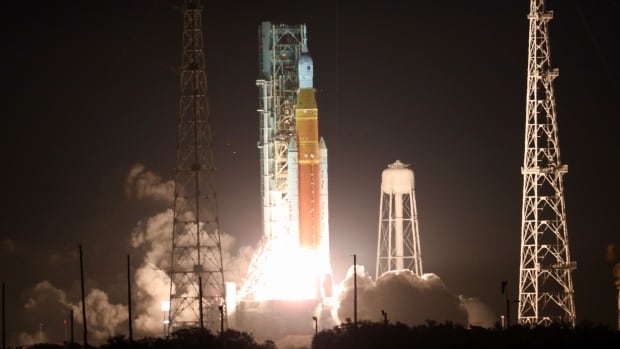NASA’s ambitious Artemis program that will once again return humans to the moon is facing more delays.
In a press conference this afternoon, NASA administrator Bill Nelson announced that Artemis II — which will see Canadian astronaut Jeremy Hansen, and Americans Reid Weisman, Christina Koch and Victor Glover orbit the moon — has been moved from November 2025 to April 2026.
Artemis III, which will see humans return to the moon for the first time since 1972 — is now scheduled to launch in mid-2027.
The delays come following the Artemis I launch in 2022 which revealed some troubling findings. That mission saw an uncrewed Orion capsule orbit the moon for several days, conduct various experiments, and return home.
Upon inspection, it was revealed that Orion’s heat shield — which protects astronauts from blistering temperatures as the capsule re-enters the atmosphere — had experienced some anomalies, potentially threatening the safety of the crew.

At the press conference, NASA deputy administrator Pam Melroy explained that, as the capsule re-entered the atmosphere in what is called a “skip entry” — where it dips in and out to gradually reduce velocity — heat accumulated in the shield’s outer layer, trapping gases, leading to cracking and uneven shedding.
“Since then we’ve been studying the data to determine the best path forward,” Nelson said. “We’ve done extensive testing to understand the risk that our astronauts will have while accomplishing the goals of landing back on the moon [and] bringing them back home safely.
Canadian astronaut Jeremy Hansen sits down with CBC’s Nicole Mortillaro to talk about being chosen for the Artemis II mission, what this means for Canada and what he’s most looking forward to experiencing during the mission.
“We’ve conducted expansive testing, including analyzing samples from the heat shield. We were able to recreate the problem here on Earth and now we know the root cause. And this has allowed us to devise a path forward.”
The plan includes keeping the existing heat shield design, but modifying the capsule’s re-entry in order to reduce the heat the shield experiences.
“Additionally, we need to complete our updates to Orion’s environmental controls in the life support systems which were identified earlier this year,” Nelson said.
The race to beat China
Nelson noted that the mid-2027 goal to reach the lunar south pole is well ahead of China’s announced 2030 goal, and said that NASA has spoken with its commercial partners in the Artemis program, including SpaceX, Blue Origin, Lockheed Martin and Boeing, as well as the European Space Agency which will provide the the European Service Module. That module is essential to the mission as it will provide electricity, water, oxygen and nitrogen to the capsule.
“We must have a shared sense of urgency among all the partners and I think we have that,” Nelson said.
He also stressed the importance of where Artemis III will land.
“The Chinese government has announced their intention to land in 2030, it may be earlier,” Nelson said. “They’re not planning to land humans on the vital portions that we’re going to land, the lunar south pole and it’s vital for us to land on the south pole, so we do not cede the portions of that south lunar south pole to the Chinese.”
The reason NASA views the lunar south pole as vital is due to the presence of ice in craters, which is useful for potential habitats. Water can also be split into hydrogen and oxygen and made into rocket fuel.
Canadian astronaut Jeremy Hansen and his fellow Artemis II mission colleagues get their first real-life look at the Orion spacecraft that will take them to lunar orbit in November 2024.
Reid Wiseman, commander of Artemis II, said that while delays may be frustrating, it was more important to understand the root cause of the heat shield issue.
And, as he often stresses, Nelson said that NASA doesn’t fly until it’s ready.
“We do not fly until we are confident that we have made the flight as safe as possible for the humans on board,” he said. “We need to do the next test flight and we need to do it right.”









